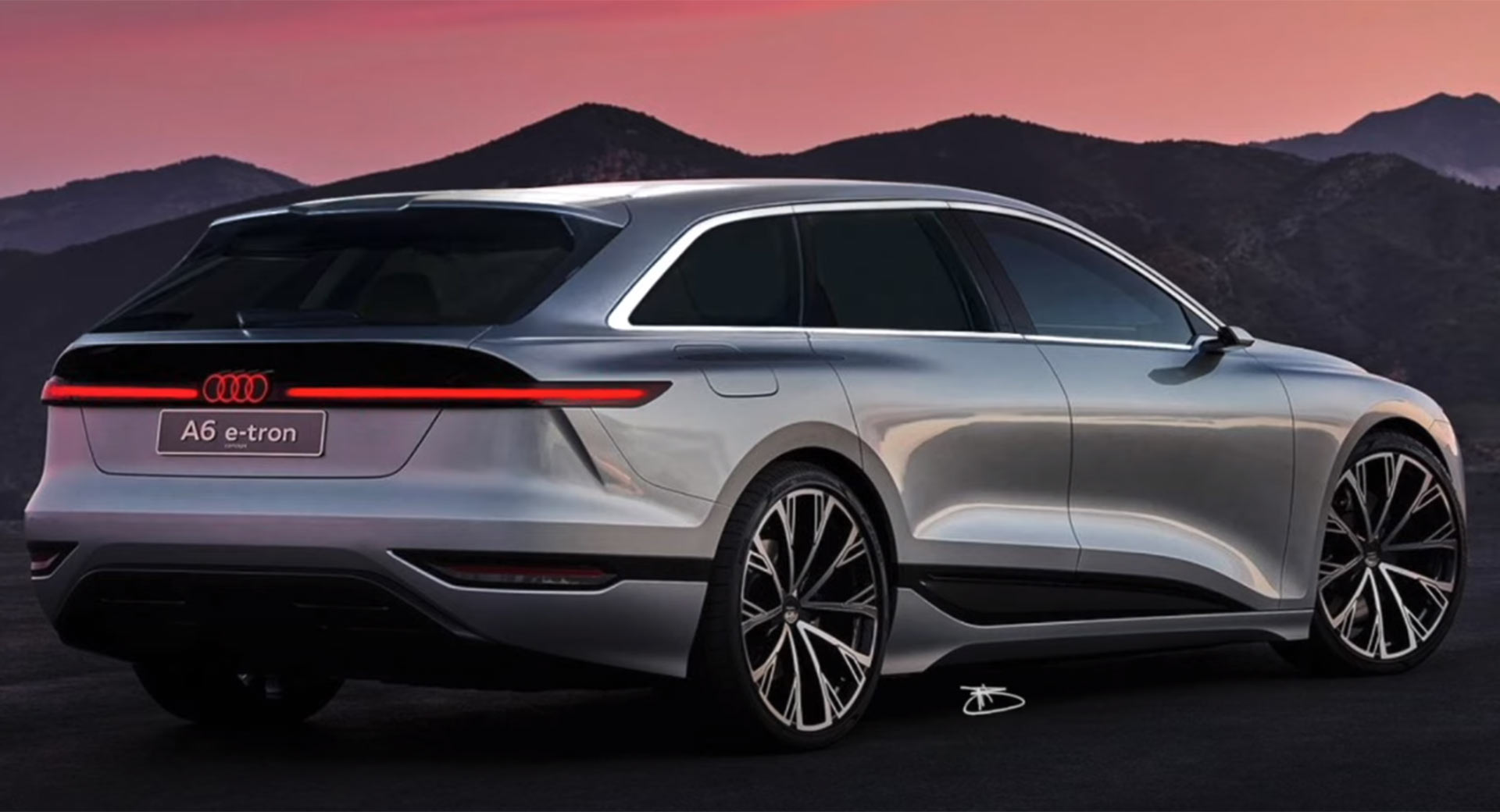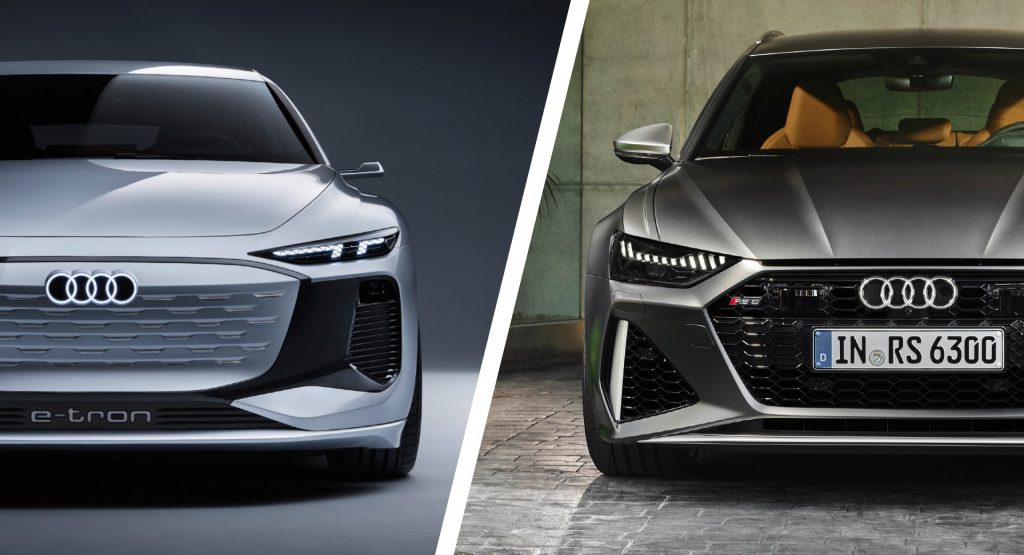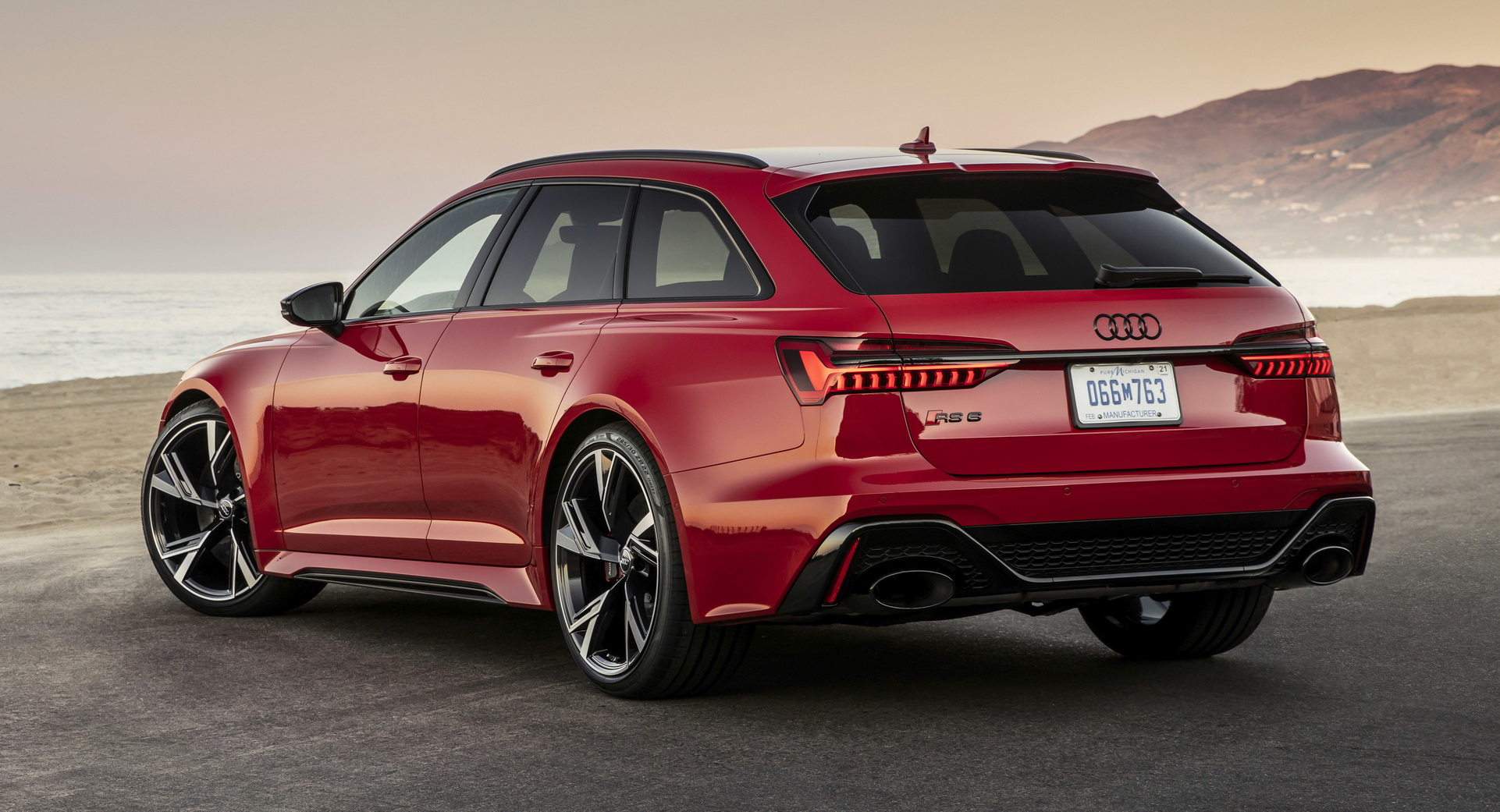Audi has confirmed that starting from 2026 they will only be launching fully electric vehicles, gradually phasing out their ICE-powered models. This also applies to Audi Sport’s range, with the e-tron S and the RS e-tron GT already showing some potential. But what lies the future for the popular RS6 Avant?
Autocar suggests that Audi Sport could be working on a future RS6 e-tron for 2023, coming together with the production version of the A6 e-tron concept that premiered last spring. Measuring 4.96 m (195.3 in) long, the concept is similarly sized to the current A6 sedan which is expected to indirectly replace in the future going against the likes of the upcoming BMW i5, and the Mercedes-Benz EQE.
See Also: 2023 Mercedes-Benz EQE Sedan Is The E-Class Of The Electric Age That’s Coming For Tesla

This is a rendering of a possible A6 e-tron Avant created by independent designer The Sketch Monkey and is not associated nor endorsed by Audi
The A6 e-tron Avant on the picture above was rendered a few months ago as a work of fiction, but it now seems that it is likely to happen. Autocar is stating “Audi bosses have all but confirmed that an estate version is on the way”, making a case for an RS6 Avant.
Sharing the PPE architecture with the Audi Q6 e-tron and the Porsche Macan, it is inevitable for the A6 e-tron to get performance variants, effectively replacing the current S6 and RS6. The concept came fitted with a 100 kW battery, and a dual motor setup producing a combined 470 hp (350 kW / 476 PS) and 800 Nm (590 lb-ft) of torque. This level of performance brings it above the current S6 which produces up to 444 hp (331 kW / 450 PS) and 443 lb-ft (600 Nm) of torque from the twin-turbo 2.9-liter TSFI V6 engine.
However, as quick as it is, the A6 e-tron concept is no match for the current RS6 flagship which comes fitted with the twin-turbo 4.0-liter V8 producing 591 hp (441kW / 600 PS) and 800 Nm (590 lb-ft) of torque.
Those figures are surprisingly close to what the larger RS e-tron GT is offering, with a combined output of 590 hp (440 kW / 598 PS) and 830 Nm (612 lb-ft) of torque, which goes up to 637 hp (475 kW / 646 PS) in overboost function. This electric powertrain sounds like a great fit for the upcoming RS6 e-tron, giving it enough grunt to face rivals from BMW M and Mercedes-AMG.
Unlike the current generation RS6 which features a redesigned body sharing only the front doors, roof, and tailgate with the A6/S6 range, the RS6 e-tron will likely look more similar to the base A6 e-tron. A similar strategy was followed by the e-tron GT and RS e-tron GT flagship sedans, and the result is rather sporty thanks to Audi’s latest design language.
What is more important for RS6 buyers, the electric successor would offer plenty of practicality, since the packaging of the electric architecture will result in a more spacious cabin and possibly an increased cargo space.











